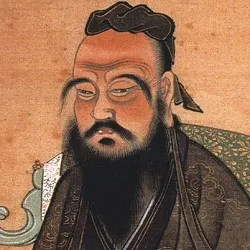- RESEARCHDistance Learning at AIU is enhanced by vast academic resources and innovative technologies build into the Virtual Campus: Hundreds of self-paced courses with video lectures and step by step lessons, thousands of optional assignments, 140,000 e-books, the Social Media & Networking platform allowing collaboration/chat/communications between students, and MYAIU develop students holistically in 11 areas beyond just academics.
- PROGRAMS OFFERED
- Areas of Study
- Courses and Curriculum
- Open Courses
- Register for a Program
- Associate Program
- Associate in Addiction Counseling
- Associate in Agriculture Food And Resources
- Associate in Anti Terrorism Security
- Associate in Behavior Analysis In Special Education
- Associate in Bioethics
- Associate in Climatology
- Associate in Cultural Theological Communication
- Associate in Culinary Arts
- Associate in Ecotechnology
- View all Associates Programs
- Bachelor Program
- Bachelors in Community Development
- Bachelors in Environmental Science
- Bachelor in Education (B.Ed, BS)
- Bachelors in Economics
- Bachelors in Entrepreneurship
- Bachelors in Financial Administration
- Bachelors in Human Resource Management
- Bachelors in Linguistics
- Bachelors in Nutritional Science
- Bachelors in Occupational Health and Safety
- Bachelors in Psychology
- View all Bachelor Programs
- Doctorate Program
- Doctor | of Biology (PhD)
- Doctorate in Business Administration (DBA, PhD)
- Doctor of Economics (PhD)
- Doctor of Electrical Engineering (D.Sc, PhD)
- Doctor of Finance (PhD)
- Doctorate in International Relations
- Doctorate in Information Technology (D.Sc)
- Doctor of Legal Studies (PhD)
- Doctor of Project Management (PhD)
- Doctor of Sociology (PhD, D.Sc)
- Doctorate in Sustainable Natural Resources Management
- View all Doctorate Programs
- Master Program
- Postdoctoral Program
- Postdoctoral in Animal Science
- Postdoctoral in Anti Terrorism Security
- Postdoctoral in Behavior Analysis In Special Education
- Postdoctoral in Bioethics
- Postdoctoral in Blockchain Technology and Digital Currency
- Postdoctoral in Business Management
- Postdoctoral in Cloud Computing
- Postdoctoral in Computer Engineering
- View all Postdoctoral Programs
AIU offers a wide range of majors in areas including the Arts, Business, Science, Technology, Social, and Human studies. More than 120 degrees and programs are available for adult learners at the associate’s, bachelor’s, master’s, doctoral and postdoctoral level. - VIRTUAL CAMPUS
Distance Learning at AIU is enhanced by vast academic resources and innovative technologies build into the Virtual Campus: Hundreds of self-paced courses with video lectures and step by step lessons, thousands of optional assignments, 140,000 e-books, the Social Media & Networking platform allowing collaboration/chat/communications between students, and MYAIU develop students holistically in 11 areas beyond just academics.
- ALUMNI
The world is YOUR campus!”, that is the message of AIU’s month magazine Campus Mundi. Hear the voices and see the faces that make up AIU. Campus Mundi brings the world of AIU to you every months with inspirational stories, news and achievements by AIU members from around the world (students and staff are located in over 200 countries).
Electrical Principles and Applications Questionnaire
Electrical Principles and Applications Questionnaire
The “Fundamentals of Electrical Principles and Applications” questionnaire explores key concepts in electrical engineering. It defines Ohm’s Law, highlighting the relationship between voltage, current, and resistance, critical for circuit analysis. Additionally, it explains the power formula (P = V x I) and introduces components like capacitors, inductors, and diodes, which manage energy flow in circuits. The document also contrasts alternating current (AC) and direct current (DC), emphasizing their unique properties and applications. Furthermore, it discusses the significance of semiconductors and the role of circuit breakers in ensuring safety within electrical systems, underscoring their importance in modern technology.

The “Fundamentals of Electrical Principles and Applications” questionnaire provides a comprehensive overview of essential concepts in electrical engineering. It begins with an explanation of Ohm’s Law, which establishes the relationship between voltage, current, and resistance in an electrical circuit. This law is critical for understanding how electricity behaves within a circuit, allowing for the calculation of any one of these variables when the other two are known.
The document details the definitions of voltage, current, and resistance: voltage is described as the electromotive force that drives electrons through a circuit, measured in volts; current is the flow rate of electric charge, measured in amperes; and resistance is the opposition to current flow within a circuit, measured in ohms. Ohm’s Law is presented in the equation V = IR, illustrating that the current in a circuit is directly proportional to the applied voltage and inversely proportional to the resistance, assuming constant temperature.
Further sections differentiate between alternating current (AC) and direct current (DC). AC is characterized by its ability to change direction periodically, while DC flows steadily in a single direction. The practical applications of each type of current are noted, with AC being commonly used in household and industrial power systems and DC utilized in batteries and electronic devices.
The questionnaire also covers important circuit components such as resistors, capacitors, inductors, and transistors. Resistors limit current flow, capacitors store and release energy, and inductors manage the energy in magnetic fields. The differences between series and parallel circuits are discussed, with series circuits sharing the same current while dividing voltage, whereas parallel circuits maintain consistent voltage across all components with current splitting across branches.
Additionally, the power formula is introduced, stating that power in an electrical circuit is the product of voltage and current, expressed as P = V x I. This section also explains the units of measurement involved: voltage in volts, current in amperes, and power in watts.
The document briefly describes capacitors and inductors as passive components crucial for filtering signals and regulating voltage and current changes within circuits. The roles of semiconductors are highlighted, explaining their function in regulating current flow through doping processes, and emphasizing their importance in modern electronics, particularly in the manufacturing of transistors.
Finally, the purpose of circuit breakers is outlined, stressing their role as safety devices that automatically interrupt power flow during overloads or short circuits, protecting electrical systems from damage and hazardous conditions. Overall, the questionnaire serves as a foundational resource for understanding electrical principles and their applications in various technologies.
Atlantic International University
Get to know the AIU experience
Contact Us Today!
We understand how busy adults do not have time to go back to school. Now, it’s possible to earn your degree in the comfort of your own home and still have time for yourself and your family. The Admissions office is here to help you, for additional information or to see if you qualify for admissions please contact us. If you are ready to apply please submit your Online Application and paste your resume and any additional comments/questions in the area provided.
Pioneer Plaza
900 Fort Street Mall 905
Honolulu, HI 96813
800-993-0066 (Toll Free in US)
808-924-9567 (Internationally)
808-947-2488 (Fax)
AIU Success Stories







Contact Us Today!
Begin Your Journey!
AIU’s Summer of Innovation and Growth gives you the ability to earn up to $5000 in tuition credit by completing free lessons and courses.
Whether you’re looking to acquire new skills, advance your career, or simply explore new interests, AIU is your gateway to a world of opportunities. With free access to 3400 lessons and hundreds of courses the ability to earn credits and earn certificates there’s no better time to start learning.
Join us today as a Guest Student and take the first step towards a brighter, more empowered future.
Explore. Learn. Achieve.
Degrees

Contact Us
Atlantic International University
900 Fort Street Mall 905 Honolulu, HI 96813 [email protected]
Quick Links
Home | Online Courses | Available Courses | Virtual Campus | Career Center | Available Positions | Ask Career Coach | The Job Interview | Resume Writing | Accreditation | Areas of Study | Bachelor Degree Programs | Masters Degree Programs | Doctoral Degree Programs | Course & Curriculum | Human Rights | Online Library | Representations | Student Publication | Sponsors | General Information | Mission & Vision | School of Business and Economics | School of Science and Engineering | School of Social and Human Studies | Media Center | Admission Requirements | Apply Online | Tuition | Faculty & Staff | Distance Learning Overview | Student Testimonials | AIU Blogs | Register for Program | Privacy Policy | FAQ



















